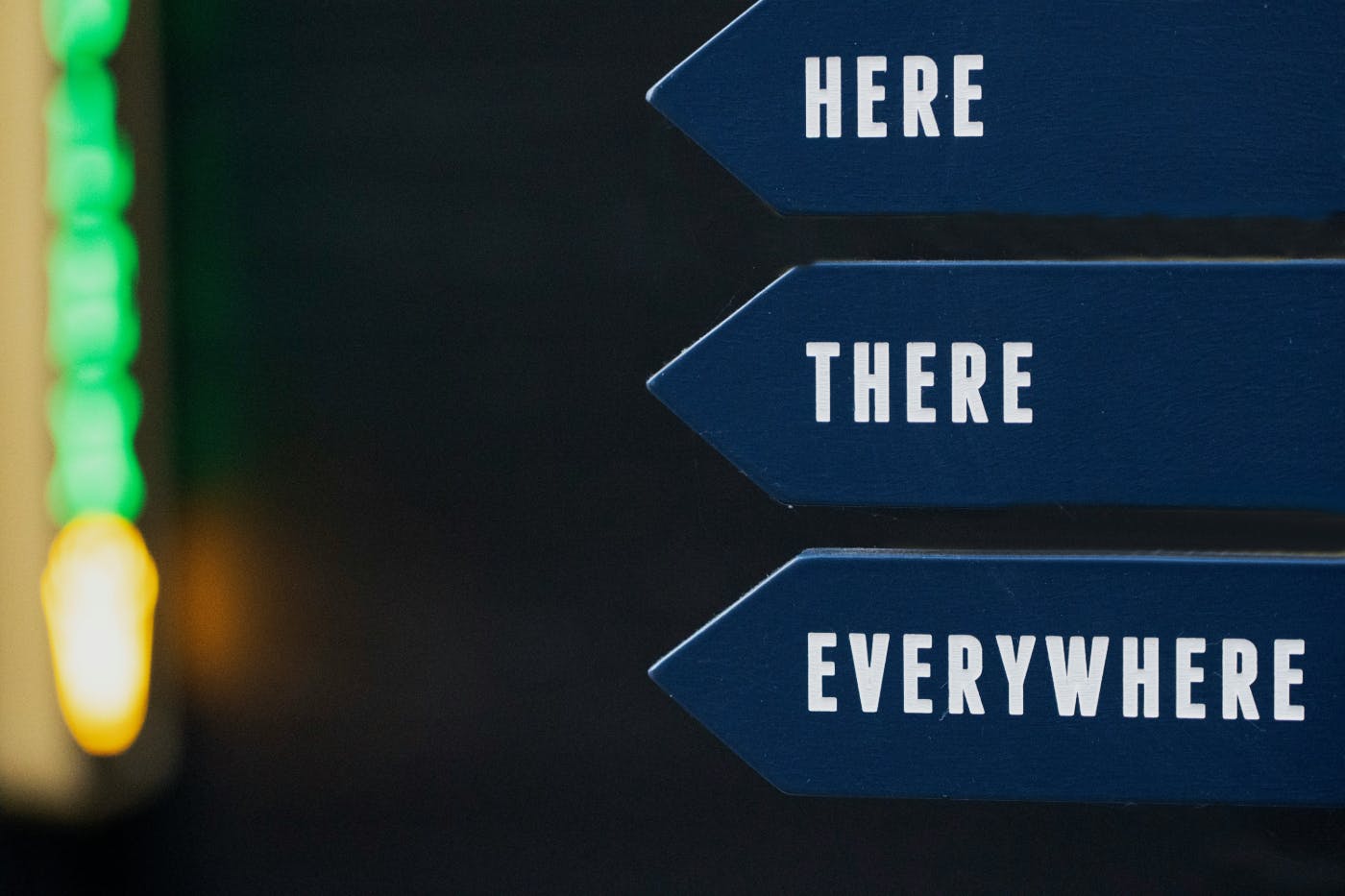

We are the products of the stories we tell—and the stories we believe. Whether we’re gathered around a fire, a screen, or a strategy meeting, we are still trying to understand the world through narrative.
On a bare stage stands a ghost light. Just a single bulb on a pole, lit when the theater is dark. Its practical purpose is safety, so no one stumbles into the orchestra pit and breaks their neck before rehearsal. But tradition holds that the ghost light is also left burning to ward off spirits, or perhaps invite them to dance in the silence of the off-hours. It’s a small, glowing reminder that even in stillness, stories linger.
Centuries earlier, two hunters returned to a cluster of huts. They lit a fire, and the tribe gathered. The hunters spoke of vast fields and horned beasts—meat enough to feed them through the cold months. As they spoke, the tribe leaned in. The story wasn’t just entertainment; it was purpose. It was hope. And by morning, the tribe was ready. Spears were sharpened. The hunt began. Because a good story doesn’t just inform—it moves people to act.
Imagine, then, a night in that empty theater. The ghost light burns. A lone figure steps into its pool of light and begins to speak. Another enters and dances the tale. A third joins, playing the story on a trumpet—three voices—spoken, physical, and musical—telling the same story in different forms. Not one overpowers the other. Each adds something essential.
We are the products of the stories we tell—and the stories we believe. Whether we’re gathered around a fire, a screen, or a strategy meeting, we are still trying to understand the world through narrative. And yet, in a time when brands have more platforms than ever, too many are forgetting how to tell a story at all.
The Curse of Knowledge and the Blob of Features
There’s a moment, often early in a company’s life, when the spark is pure. A founder, a builder, a dreamer sees a problem and decides to fix it—not with slides or stats, but with a sense of mission. The story is simple: someone is struggling, and we think we can help. That’s the heartbeat. That’s the first story. And it’s good.
But something happens as a brand grows. More people get involved. More voices, more layers, more metrics. The original story—the why—starts to take a backseat to the what. Suddenly, you’re not telling a story anymore. You’re listing assets.
That’s when the Blob shows up.
The Blob is what happens when a story collapses under its own weight—when the message is overtaken by product specs, service tiers, jargon-heavy feature sets, and promises so abstract they mean nothing at all. "Seamless integration." "Data-driven." "Cloud-native." "Optimized workflows at scale." The Blob doesn’t inspire. It numbs.
But the Blob didn’t appear out of nowhere. It’s the natural byproduct of the Curse of Knowledge—that cognitive blind spot where experts forget what it’s like to be new. The developers, the engineers, the founders know their product so intimately that they lose the ability to explain it simply. They want to be accurate. Precise. Impressive. But in doing so, they forget to be human.
And here’s the twist: they’re not wrong to care about the details. They just start in the wrong place. They assume people want to hear about the horsepower of the engine before you’ve even shown them the car. But no one buys a car for the compression ratio—they buy it because it makes them feel something. Because it represents something. Because it fits the story they’re trying to tell about themselves.
That’s where most brand messaging typically falls short. Not in the facts, but in the frame. Not in the truth of what a product does, but in the lack of a narrative that makes that truth matter.
The Curse of Knowledge also makes internal teams impatient with simplicity. A tagline like “We help people feel more secure” sounds too soft, too vague. So it gets swapped for something that passes the internal review process but fails the gut check. Something no human has ever said out loud. Something forgettable.
And when a brand forgets its own origin story—why it exists, who it serves, what change it wants to make—it starts talking like a PowerPoint deck instead of a person. And people don’t connect with decks. They connect with stories.
Not stories for the sake of performance. Not stories bolted on after the fact. But stories that are baked in—that inform the tone, the priorities, the customer journey, the decisions made at every level. Storytelling as scaffolding. Not polish.
Because if you don’t shape the story, the story will shape itself—and usually into something forgettable.
And one of the most common mistakes brands make while shaping that story? Putting themselves at the center, instead of the customer.

Starting with the Brand Instead of the Buyer
It’s one of the most natural things in the world—to talk about yourself. Your accomplishments. Your ideas. Your product. After all, you built something worth believing in. Shouldn’t that be the center of the story?
But that’s not how stories work. Not the ones that stick.
The best stories aren’t about the storyteller. They’re about the audience.
Yet over and over, brands position themselves as the protagonist: We’re the innovators. We’re disrupting the space. We’re leading the future. It's a tempting posture, but it’s upside down. Because the audience—the buyer, the user, the curious newcomer—they’re the ones trying to get somewhere. They're not looking for a hero. They’re looking for help.
In great stories, the hero is the one in motion. The one facing a challenge, unsure of the outcome. The one looking for a way forward. That’s your customer. Your brand? You’re the mentor. The guide. The ally with the map and the torch. You’re Obi-Wan, not Luke. You’re Virgil, not Dante.
This isn’t just metaphor. It’s structure. It’s narrative architecture—the kind that organizes information not around what a brand offers, but around what a customer needs.
The pain point comes first. The journey comes next. And only then do you show how your product, your service, your expertise helps move the story forward. Not because you're the center of the universe, but because you're the right companion for this part of the journey.
When brands center themselves, they often talk past the customer. They talk about how advanced the platform is, how many awards they’ve won, and how passionate the team is. That may be true, even admirable—but it’s not what people are listening for. They’re listening for themselves. They want to hear their own struggle reflected back to them, and they want to feel understood before they’re asked to trust.
This is the difference between claiming value and demonstrating relevance. Anyone can say they’re the best. Very few take the time to show that they know what it feels like to be stuck, frustrated, overwhelmed, or uncertain—and then gently point to a path forward.
The brands that do this well speak in human terms. They don’t start with “what we do.” They start with “what you’re facing.” They don’t brag. They empathize. And that empathy becomes the foundation for everything that follows: messaging, UX, design, voice, even product development.
Because when you position your customer as the hero, your brand becomes something rare—a brand that listens. A brand that sees. And people don’t forget the moment they felt seen.
The Anatomy of a Great Brand Story
A good story moves. It has shape. Tension. Rhythm. It invites the audience in, holds their attention, and leaves them changed. The same is true of great brand stories—but too often, companies treat their messaging like a memo instead of a narrative.
A great brand story isn’t a slogan. It’s not a 90-second explainer. It’s the emotional throughline that makes everything else make sense.
Here’s a framework—not a formula—for building a brand story that resonates:
1. The Problem: What’s in the way?
Every compelling story begins with friction. A challenge. A tension that must be resolved. If there’s no problem, there’s no plot—and no reason to care.
For brands, this isn’t just “our product is better.” It’s: What’s frustrating your customer? What keeps them from sleeping well, showing up fully, or doing what they do best?
Example: A small business owner drowning in spreadsheets, terrified of tax season. That’s a real problem, not a market opportunity.
2. The Promise: What’s on the other side?
People don’t buy features—they buy futures. They want to know what life looks like after they’ve said yes to you. What changes? What feels easier, lighter, faster, or freer? Your brand’s promise is a vision of that transformed state—simple, vivid, and emotionally true.
Think of Nike. They don’t sell shoes—they sell greatness. The possibility that, with effort, you could just do it.
3. The Proof: Why should I believe you?
Every promise needs a spine. Without evidence, your story is just a fairy tale. Proof can come in many forms: social proof, data, testimonials, past wins, or simple transparency. But the most powerful proof often comes from demonstrating understanding, not just results. When your brand shows that it gets it, trust begins.
Patagonia doesn’t just say it cares about the planet—it builds its entire supply chain around that care, and invites customers into that mission.
4. The Personality: What makes this yours?
The best stories sound like someone, not something. Voice, tone, rhythm—these aren’t afterthoughts. They’re signals. They tell people whether you’re bold or warm, serious or quirky, premium or punk rock. Your story should feel like it couldn’t belong to anyone else. That’s how it cuts through.
BeardMeatsFood doesn’t just eat for sport—he eats with heart. His brand story is laced with humor, grit, and vulnerability. It’s unmistakably him.
Put these together, and you have something alive. A story that doesn’t just talk at people but speaks with them. A story that shows up across your homepage, your product copy, your sales pitch, and your TikToks. One voice. Many expressions. Still the same story.
And the key to making that story stick? Telling it not just once, but everywhere—and always in sync.

Where Story Shows Up (Spoiler: Everywhere)
At Disneyland, you’ll never see two Mickey Mouses at once. Doesn’t matter how many parks are running, how many guests are inside, or how many kids are begging for hugs—there is only ever one Mickey onstage at a time. If he’s in the Magic Kingdom, he won’t be at EPCOT. If he’s at the parade, he won’t be backstage posing for pictures. The illusion is sacred. The story is protected.
Disney knows that even the smallest crack in consistency can unravel the whole myth. And brands, whether they sell mouse ears or microchips, would be wise to take note.
A brand’s story isn’t confined to its origin story or About page. It’s not a paragraph you park on a website and forget. It’s the living, breathing expression of your values, personality, and purpose—and it has to show up everywhere. Not just loudly, but consistently.
- On your homepage, it’s the headline that either hooks or repels.
- On social media, it’s the tone in your replies, the humor in your captions, the care in your community-building.
- In your product, it’s how things are named, how instructions are written, and how errors are explained.
- In your hiring process, it’s how you describe roles, write job posts, and treat candidates.
- On your invoices. In your contracts. Even in your 404 pages.
Because here’s the thing: most people won’t read your whole story, but they’ll feel it. In the way your brand behaves. In the thousand tiny signals that say, “Yes, this is who we are.” Or don’t.
When story is an afterthought, those signals go static. Your site sounds like one thing, your support emails sound like another, and your leadership sounds like a third. That kind of fragmentation doesn’t just confuse—it erodes trust.
But when the story is whole, when every interaction, every touchpoint, every detail echoes the same voice and values—that’s when a brand becomes believable. Memorable. Magnetic.
Consistency doesn’t mean repetition. It means coherence. It means telling the same story in different forms—spoken, danced, played, just like the figures who stepped into the ghost light.
But what happens when a brand doesn’t commit to that story? When it chooses silence—or worse, contradiction?
The Risk of Getting It Wrong—or Saying Nothing at All
Not every brand fails loudly. Some fail quietly, like a stage gone dark. No curtain call. No final bow. Just a gradual fading from relevance. And more often than not, it starts when a brand forgets—or refuses—to tell its story.
Because here’s the truth: a brand without a story isn’t mysterious. It’s invisible.
You don’t get credit for being humble if no one knows what you stand for. You don’t win loyalty by being a blank slate. In a world full of noise, silence isn’t elegant—it’s erasure. Consumers don’t have the patience to decode your intentions. They’ll move on to the brand that speaks clearly, that speaks to them.
And what about the brands that do speak, but say the wrong things? The ones who wrap themselves in buzzwords, inflate their purpose, or mimic others to chase a trend?
That’s not storytelling—it’s posturing. And people can smell it.
A brand that talks in clichés becomes forgettable. A brand that fakes authenticity becomes distrusted. A brand that tells a story it hasn’t earned becomes a punchline. (Just ask the brands that posted black squares during protests and then quietly returned to business as usual.)
Getting it wrong doesn’t always look like backlash. Sometimes it just looks like disinterest. The customer who clicks away. The applicant who doesn’t finish their application. The visitor who doesn’t remember a thing about your site a minute after leaving.
No story = no memory. No memory = no brand.
And here’s where it cuts even deeper: when you don’t tell your story, someone else will. They’ll make assumptions. Fill in the blanks. Project their doubts. Or worse, your competitors will step in and tell their story better, claiming the emotional space you left empty.
But this isn’t about fear. This is about possibility.
Because the truth is, every brand has a story. Even the quiet ones. Even the complicated ones. Even the ones that have made mistakes. The question is: will you tell it clearly, honestly, and well? Or will you leave the ghost light on and hope someone wanders in?
The good news is that the story doesn’t have to be perfect—it just has to be yours. And the moment you commit to telling it with clarity and care, you’re already ahead.

When No One Knows the Story—Not Even the Team
A brand without a clear story doesn’t just confuse its audience. It confuses its own people.
When employees can’t articulate what the company stands for—or why it matters—they default to tasks. Output. Going through the motions. They become order-takers instead of storytellers, and the work begins to lose meaning.
This is how you end up with misaligned marketing, flat creative, clunky sales decks, and customer service scripts that sound like they were written by a different species. It’s not because people aren’t smart or skilled. It’s because they’re operating in a vacuum. And in that vacuum, silence gets filled with assumptions, not alignment.
Story gives people language. It gives them a sense of belonging and a reason to care. It unites engineering with design, sales with product, and leadership with operations. Because when everyone is telling the same story—when everyone understands not just what they’re doing, but why—that’s when culture starts to hum. That’s when customers feel it. That’s when the brand comes alive.
If your team doesn’t know your story, your audience never will. That’s not a communications problem. That’s a leadership one.
Which leads us to a deeper truth: storytelling isn’t just for marketing. It’s a strategic act of leadership.
Storytelling Isn’t Window Dressing—It’s Architecture
There’s a dangerous misconception in business: that storytelling is something you slap on after the real work is done. A nice tagline. A glossy campaign. A few lines of copy to dress up the deck.
But storytelling isn’t veneer. It’s structure. It’s the scaffolding that holds the whole brand together.
It tells you what to build. What to say no to. Where to focus. It guides product development, hiring decisions, investor decks, partnerships, pricing models, and even packaging. Without a story, you're just stacking features and hoping they form a shape. With a story, you’re building with intention.
Think of the brands you trust most. The ones that feel clear, cohesive, and confident. That’s not luck. That’s architecture. Someone made decisions. Someone drew blueprints. Someone insisted that the story be the blueprint, not just the banner.
This is why storytelling belongs in the boardroom, not just the branding workshop. Because if leadership doesn’t shape the narrative, the narrative will shape itself. And usually, it’s shaped by market trends, competitor positioning, or fear. None of which make for a lasting foundation.
And yet, in all this strategy, there’s something even more powerful: truth. Not polished, not perfect—just human.
The Power of an Imperfect Story
Most brands don’t struggle to tell a story because they have nothing to say. They struggle because they’re trying to say it perfectly.
They want a flawless arc. A tidy origin. A clean promise with no loose threads. But real stories don’t work that way. Real stories are messy. They involve risk. Missteps. Doubt. They change direction. They evolve over time.
And so do great brands.
There is profound power in vulnerability—the kind that says, “Here’s where we started. Here’s what we learned. Here’s what we’re still figuring out.” That kind of honesty doesn’t weaken a brand. It humanizes it. It makes it believable.
We’re long past the era where audiences wanted slick, soulless polish. Today’s consumers want transparency. They want values that feel lived-in, not laminated. And they want to know that the people behind a brand are still asking questions, not just parroting answers.
It’s okay if your story isn’t neat. It’s okay if it’s still being written. What matters is that it’s true—and that you’re brave enough to tell it.
Because when you’re brave enough to tell the truth, you give people a reason to lean in—and follow.
You Can Rewrite the Story (And You Don’t Have to Do It Alone)
If your brand story has gone quiet—or scattered—or stale—you’re not stuck. Stories are living things. They can be rediscovered, reimagined, and rebuilt. You don’t need to burn everything down. You just need to begin with one honest question:
What do we want people to believe about us—and why should they?
That question is the opening line. And from there, you can shape the arc. The promise. The voice. The personality. You can realign teams, update messaging, and rethink how your story shows up in the world.
You don’t have to do it all at once. And you don’t have to do it alone.
There are partners who specialize in helping brands find their voice again—agencies like ThoughtLab, who don’t just polish messaging, but uncover the truth beneath it. Who ask uncomfortable questions. Who dig into the tension. Who help brands tell stories worth hearing.
Because when you finally tell the right story—clearly, consistently, and courageously—people respond. They remember. They return. Not because they bought your product, but because they believed your story.
So let’s bring it back to that single light on the stage, and what happens when someone finally steps into it.

Summing Up: Step Into the Light
On that empty stage, the ghost light still burns. Not because someone forgot to turn it off, but because someone knew that the story isn’t over. The light stays on for the next person to arrive. The next voice to speak. The next truth to be told.
That’s what brand storytelling is. It’s stepping into the circle of light and saying, Here’s who we are. Here’s what we’ve seen. Here’s why it matters.
Some brands step in with confidence. Others hesitate. Some don’t step in at all. But the brands that endure—the ones people remember, follow, and trust—are the ones who step in anyway. Not with perfection. But with purpose.
Because without a story, you’re just selling a product. With a story, you’re building meaning. Memory. Movement.
If your brand has lost the thread—or never found it in the first place—this is your moment. Reconnect with the reason you exist. Find the words that make people lean forward. And most of all, make sure that story lives not just in your marketing, but in your product, your people, and your promise.
At ThoughtLab, we help brands step into that light. We dig deep, ask better questions, and help teams find the story that was always there, just waiting to be told, not as a tagline, but as a truth.
Because once the story is clear, everything else gets easier.
